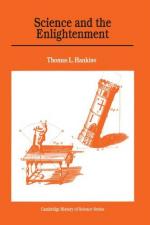
|
| Name: _________________________ | Period: ___________________ |
This test consists of 15 multiple choice questions and 5 short answer questions.
Multiple Choice Questions
1. Who had written a preface to the second edition of the "Principia," supposedly with Newton's blessing, that described gravity as a force acting at a distance without any intervening medium?
(a) James Butler.
(b) Henry Oldenburg.
(c) Robert Boyle.
(d) Roger Cortes.
2. What was the name of the philosopher who had a passion for humanity, a desire to "do good," and a penchant for reform, according to Chapter 1?
(a) Maupertuis.
(b) Descartes.
(c) Newton.
(d) Condorcet.
3. What was the name of the philosopher who could enthusiastically claim that "the works of Nature everywhere sufficiently evidence a Diety"?
(a) D' Alembert.
(b) Aristotle.
(c) John Locke.
(d) Kant.
4. Who became the leading literary figure of the Enlightenment and in 1734 published "Philosophical Letters"?
(a) Breteuil.
(b) Voltaire.
(c) Newton.
(d) Chatelet.
5. The narrator reveals that mathematicians pursued ________, in which the physical object was reduced to a few idealized properties that were capable of quantification.
(a) Psychology.
(b) Synthesis.
(c) Rational mechanics.
(d) Analysis.
6. The concept of a ________ was a necessary step in the process of quantification, according to the narrator in Chapter 3.
(a) Acid fluid.
(b) Subtle fluid.
(c) Transmission fluid.
(d) Capacitor fluid.
7. According to the narrator in Chapter 1, what was the key to a correct method whose model was mathematics?
(a) Geometry.
(b) Reason.
(c) Nuture.
(d) Nature.
8. In Chapter 3, what was the name of the experimental tradition began in Western Europe during the Renaissance?
(a) Practical magic.
(b) Physics.
(c) Black magic.
(d) Natural magic.
9. What was the name of the path by which an object slides from one point to another that is not on the same vertical line in the shortest possible time?
(a) Catenary.
(b) Tractrix.
(c) Involute.
(d) Brachistachrone.
10. What was the name of the priest of the Congregation of the Oratory, who was also a philosopher, mathematician, and member of the French Academy of Sciences?
(a) Chatelet.
(b) Descartes.
(c) Nicolas Malebranche.
(d) Newton.
11. The eighteenth century was called by the French the ________ because of its emphasis on reason as a path to knowledge.
(a) Century of science.
(b) Century of reason.
(c) Century of light.
(d) Century of life.
12. Who was the extraordinary philosopher whose life and career exemplified many aspects of the Enlightenment, although he was not especially prominent as a natural philosopher nor was he the main protagonist in the vis viva controversy?
(a) Gabrielle de Breteuil.
(b) Chatelet.
(c) Bernoulli.
(d) Voltaire.
13. According to Chapter 1, who made Newton into a supreme rationalist whose laws of motion were a priori deductions of pure thought?
(a) Roberts.
(b) Fontenelle.
(c) Marquis de l'Hopital.
(d) Maupertuis.
14. Throughout the Enlightenment, reason was usually extolled in the same breath with ________, the other key word of the Enlightenment.
(a) Nuture.
(b) Nature.
(c) Science.
(d) Religion.
15. Chapter 2 reveals that Leibniz wrote the "second difference" in calculus as ________.
(a) D2X.
(b) B3C.
(c) R6Z.
(d) A3E.
Short Answer Questions
1. According to Chapter 1, ________, in 1747, attributed the cause of a "great revolution in physics" to Newton's "Principia."
2. In 1819, who gave a clue to the source of this pessimism when he wrote that "the power of our analysis is practically exhausted"?
3. The ________, who had been leaders in experimental physics during the seventeenth century, continued to hold a prominent place until their order was suppressed in 1773.
4. Which German metaphysician, when asked in 1785 if he believed he lived in an enlightened age, answered, "No, we are living in an age of enlightenment."
5. In Chapter 2, what was the name of the path of a body that is dragged over a resisting horizontal surface by a cord of which one end moves along a straight line found?
|
This section contains 569 words (approx. 2 pages at 300 words per page) |

|




